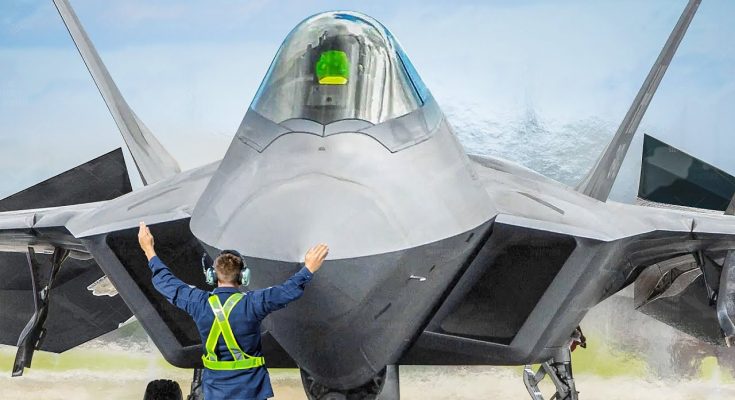Starting a monstrously powerful U.S. stealth fighter jet like the F-22 Raptor or the F-35 Lightning II requires precision, expertise, and a strict adherence to protocols. These jets are cutting-edge machines designed for air superiority, capable of performing complex maneuvers at high speeds, all while maintaining stealth capabilities that make them nearly invisible to enemy radar. Getting these advanced aircraft up and running involves a series of carefully coordinated steps to ensure both safety and performance.
Pre-Start Preparations
Before starting the engine, the ground crew performs thorough checks to ensure everything is in top condition. This includes inspecting the airframe, avionics, and engine components for any signs of damage or wear. The crew checks for fuel levels, hydraulic systems, and electrical connections, making sure that all systems are in place for a smooth start.
Powering Up the Systems
The pilot enters the cockpit, which is equipped with advanced avionics and a heads-up display (HUD) to assist with navigation, targeting, and flight control. The first task is to power up the aircraft’s avionics systems. This includes engaging power to the cockpit displays, communications systems, and the engine control units. These jets use highly sophisticated systems that manage everything from radar evasion to weapons control, so getting them operational is key to a successful launch.
Engine Start
Starting the engine is a highly technical process, usually done in stages. The stealth fighter is powered by advanced turbofan engines designed for high performance. For instance, the F-22 uses the Pratt & Whitney F119-PW-100 engine, which can generate over 35,000 pounds of thrust.
- Fuel Flow: The pilot initiates the fuel system, ensuring that the fuel is routed to the engine correctly.
- Ignition Sequence: The pilot presses a button or flips a switch that starts the ignition sequence, which powers up the engine. A strong burst of electricity is sent to the engine’s starter, spinning it up and igniting the fuel-air mixture inside the combustion chamber.
- Engine Spool-Up: The engine begins to spool up, increasing in speed and power. At first, there’s a noticeable whine as the turbine begins its spin. During this process, the engine control unit (ECU) continuously monitors parameters like oil pressure, engine temperature, and fuel flow to ensure that everything is operating within optimal ranges.
- Throttle Control: Once the engine reaches idle speed, the pilot gently increases the throttle to allow for full power when needed. The fighter’s engine is capable of producing afterburner thrust, which significantly increases engine power for supersonic speeds. Afterburners provide extra thrust without additional fuel, but they come with a distinctive flame at the back of the engine.
Stealth Systems Activation
One of the most critical components of a stealth fighter is its radar-absorbing materials and its low radar cross-section. Once the engine is started, the pilot checks the stealth systems. This includes activating radar-evading measures and aligning the aircraft’s internal systems with its stealth characteristics, which will allow the fighter to fly undetected by enemy radar.
Final Checks and Takeoff
Once the engine is running smoothly, the pilot performs final checks, ensuring that all weapons systems, flight controls, and avionics are operational. The fighter jet’s flight control systems are designed for high agility and precision, so the pilot needs to ensure they’re in proper working order before takeoff.
Finally, with the throttle pushed forward, the aircraft taxis to the runway. The jet’s engines roar to life, producing a powerful and intimidating sound as it begins its takeoff roll. With the power of its engines and its stealth capabilities, it lifts off the ground and is ready to engage in high-speed missions or deliver air superiority.
Starting a stealth fighter jet is an intricate process that blends technology, precision, and skill, ensuring these powerful machines are ready to perform their critical missions in defense of national security.



